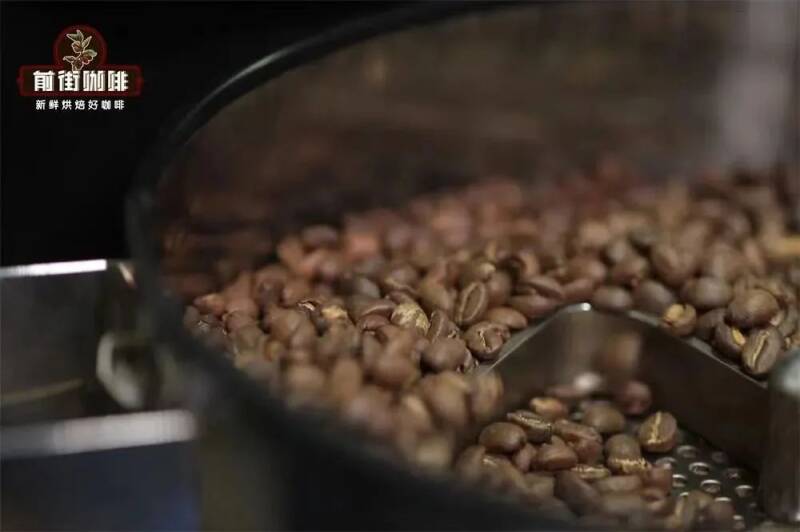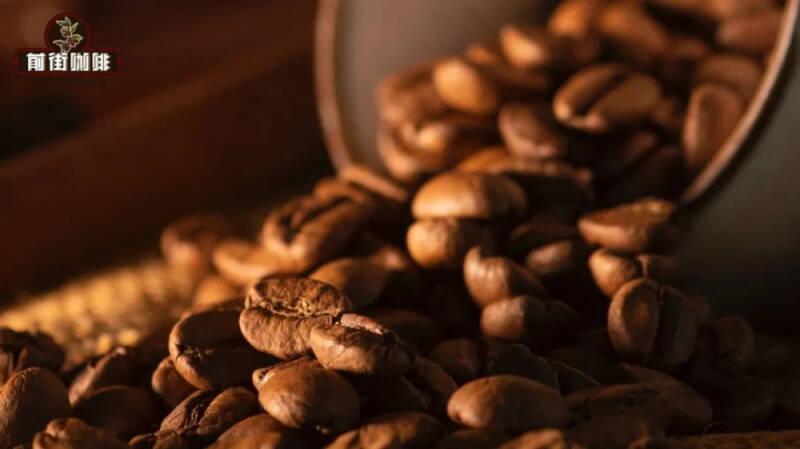How is the Maillard reaction different from the Maillard reaction when roasting coffee beans? What is the caramelization reaction?
Every autumn and winter, "Merad color" always set off a wave of trend! Maillard refers to the color change of food as a result of Maillard's reaction during cooking. Brown, brown, orange and yellow are the main colors of this color system. Coffee beans are also a kind of food, so when we are roasting coffee beans, we also have a Merad reaction. So the question is: what effect will this reaction have on coffee?

What is the effect of Maillard reaction when roasting coffee beans? Maillard reaction (Maillard reaction) is also called "Mena reaction" and "non-enzymatic browning reaction"! It was proposed by French chemist L.C.Maillard in 1912. It refers to the reaction of sugars with proteins or amino acids when they are baked at high temperatures. The reaction will produce brown or even black macromolecular substance melanin-like substance, as well as most small molecular substances. They will give food a very rich aroma molecules, as well as a variety of color changes. The same goes for applying it to coffee beans.

The roasting process of coffee beans can be summarized into four main stages: dehydration period, relay period, first explosion and second explosion. Maillard's reaction begins when the dehydration of raw coffee beans is completed. After the Maillard reaction begins to take effect, the beans will fade from their original turquoise (or light yellow) and dye them yellow. Therefore, this node is often called "yellowing stage". As the baking process increases, yellow will gradually change to brown. Then, as mentioned at the beginning, in addition to the change in color, the aroma substances of coffee will be degraded and repolymerized by heat to produce new aromatic substances and compounds, and this is repeated over and over again. So the aromatic substances will snowball like more and more! The study shows that the number of substances evolved at this time is as high as more than 600 kinds! The fragrance of flowers and fruit is the aromatic substance formed at this stage. Therefore, it can be seen that the main function of Maillard reaction is to provide rich aroma substances for coffee beans.
Qianjie would like to mention a misunderstanding here, that is, there is another important reaction in the roasting process of coffee beans-the "caramelization reaction", which occurs when the explosion is about to begin. This has led many friends to mistakenly believe that the beginning and end of Maillard's reaction is in the yellowing stage and before the explosion begins. But in fact, it starts from the yellowing point and lasts until the end of baking, but its efficiency is slowed down by the emergence of caramelization.
What is the caramelization reaction when roasting coffee beans? Caramelization means that sugars are continuously heated above the melting point in the absence of amino compounds to decompose and form brand-new molecular compounds. The reaction begins at 171 °C, which happens to be the node where the beans are about to explode in the furnace, which is why Qianjie says it will happen before the explosion begins. Caramelization causes beans to produce the aromatic substance diacetyl, which is the main source of cream aroma; furan compounds, which are the main source of caramel aroma; and hydroxymethyl furfural, which is the main source of sweet and sour aromas such as honey and fruit juices. It also works to the end of the baking! But it is worth mentioning that if roasted too deeply, it will cause caramelization to overreact and develop into carbonization, which will lead to a very obvious bitter taste of coffee.
When the coffee beans start in an explosion, you can end the baking at any point in time and let the beans out of the oven! The earlier the baking time, the lighter the baking degree of the beans, the lighter the baking degree, the less the caramelization reaction! Without the aroma masking brought by the caramelization reaction, the flower and fruit flavor is more obvious, while the later the baking is, the deeper the roasting degree of the coffee bean is, and the more serious the caramelization reaction is! The heavier the reaction, the heavier the flavor of nuts, chocolate caramel and so on. At the same time, it will make the coffee taste more mellow because of the existence of a large amount of fat. This is the role of caramelization! -END-
Front Street Cafe
No. 10 Baoqian street, Yandun road, Dongshankou, Yuexiu district, Guangzhou, Guangdong province
Important Notice :
前街咖啡 FrontStreet Coffee has moved to new addredd:
FrontStreet Coffee Address: 315,Donghua East Road,GuangZhou
Tel:020 38364473
- Prev

Are camping tables and chairs standard in cafes?
▲ Click to follow | Daily boutique Coffee Culture Magazine Coffee Workshop Cafe for coffee consumers, in addition to drinking coffee, office workers will deal with work or meet customers in the coffee shop, while young artists will read a cup of good books in the cafe. It can be said that different consumers have different needs for the coffee shop. But
- Next

Starbucks has been revealed that the "low cause option" of the new drink has been withdrawn.
▲ Click to follow | Daily boutique Coffee Culture Magazine Coffee Workshop in the morning and noon, people buy coffee mainly to cheer up their day's work, or to start a leisure afternoon tea time. In the evening to night, the pick-me-up became the "negative sign" of coffee, and many workers chose to be angry.
Related
- Why does hot American coffee taste bitter? Difference in proportional concentration between hot American and ice American
- Is espresso stored overnight in the refrigerator harmful to your body? Is frozen coffee better than freshly ground coffee?
- What parameters and proportions of water temperature should be used to grind and brew fresh coffee beans? Why can't I drink freshly roasted coffee right away?
- Customers have "changed" Manner's new products! Shop assistant: Please don't mess around!
- Remove sockets in customer areas at Starbucks stores?! Netizen: I won't go if I really tear it down
- What is the difference between the taste steps of sun-dried coffee and washed coffee? Why is sun-cured coffee sweeter and washed coffee sour?
- The recipe for salty grapefruit dirty is revealed! Coffee Festival salty grapefruit dirty coffee making materials parameters ratio milk share!
- How about the flavor of Sunlight 74158 at Sidamo Banshaha Mathieu Processing Factory in Ethiopia? 74158 Share the proportion of coffee brewing parameters!
- What effect does Italian American coffee with filter paper have? Will coffee taste better if it is put on filter paper at the bottom of the powder bowl?
- What is the color difference in coffee beans? What are the characteristics of honey processed coffee beans? Why are the anaerobically treated coffee beans uneven in color?

